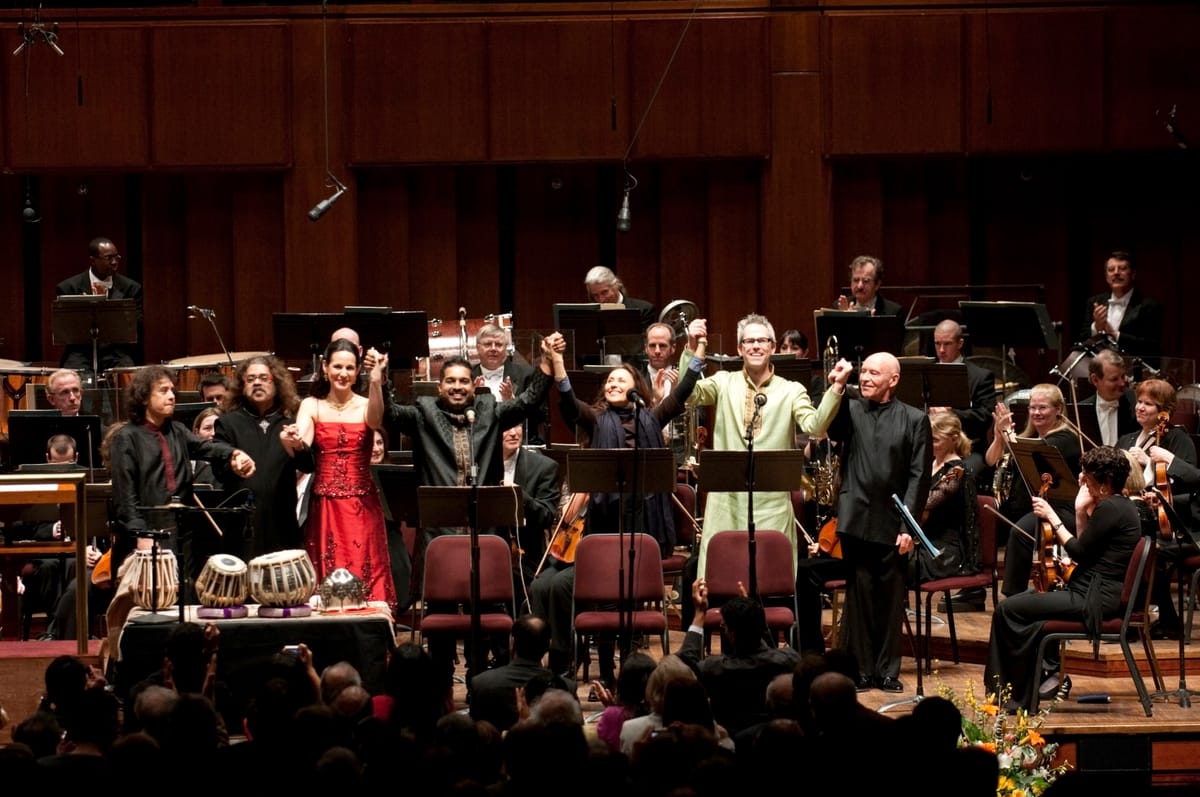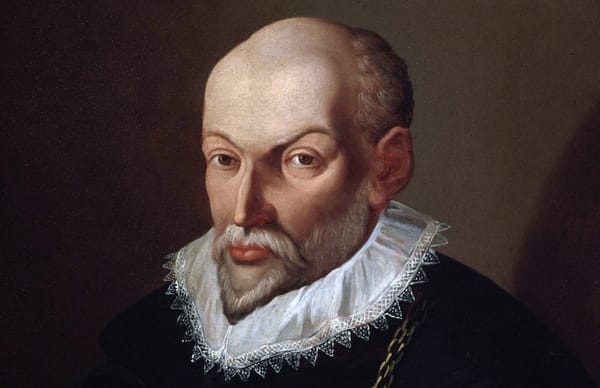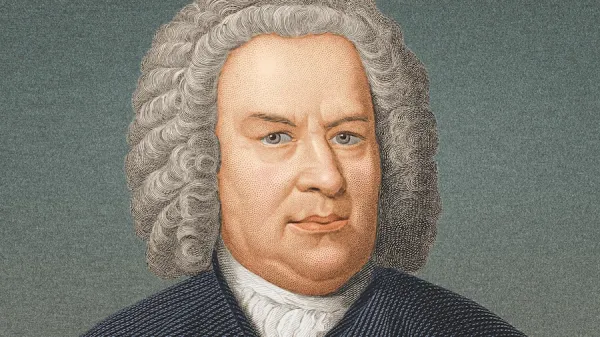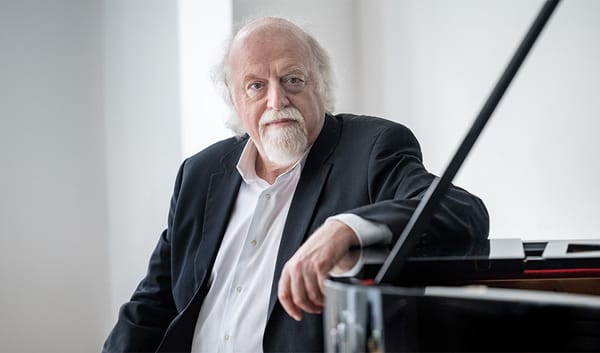The Politics of Freedom – and the Powerful Role of Music and Composition

The two works slated for performance by the SOI on 25th February could not be more different. But both are compelling essays that convey a message directly from the composer that is far broader than any single performance and as powerfully universal as it is timely. Zane Dalal traces the origins of these pieces as he introduces the forthcoming season’s repertoire.
It is a great pleasure to write for the ON Stage once more, to introduce our readers to the treasures that lie ahead in the forthcoming Spring 2020 season of the Symphony Orchestra of India. A word or two about the repertoire in general is worth repeating. The docket for the orchestra is always a challenging subject – challenging because it is commanded by two instinctive questions that must meet in the middle. On the one hand, what will play well to our audiences and inspire them to attend and support us? On the other, what is the appropriate repertoire to challenge and grow the technique, stamina, dexterity and performing experience of a nascent orchestra, not yet a middling teenager? We must look to the methodical placement of blocks of masonry, especially when they are early and foundational. Like a great medieval cathedral – the initial lines of sight, and plumbing of sure lines must be accurate, as they will make or break the edifice. Future generations decades ahead will test those true equations – and like the cathedral masons, it is possible that the grandchildren of the original master builders will attend the consecration of their life’s work, as old men. When we meet to decide the best path, to plot the line ahead, these factors weigh heavily on our minds, and I know that discussion and conversation between our Chairman Khushroo Suntook, our Music Director and Co-Founder Marat Bisengaliev and myself, is a healthy back and forth. We know that consensus, as well as all the ideas on the table will point to a path that must be true and daren’t be whimsical. What makes it all the more challenging is the steep trajectory upon which the orchestra finds itself – and whilst we are proud of the strides we have made in a relatively short time, we must maintain the impetus and the search for excellence. This season, we not only deliver on technical challenge and experience, but we broaden the scope for players and audiences alike, with the introduction of French repertoire, performed by the experts, pianist Jean-Philippe Collard and conductor/composer Laurent Petitgirard; a programme of the core classical repertoire – Mozart & Beethoven – with the celebrated pianist Maria João Pires and conductor/violinst Augustin Dumay; and performing the Indian premiere of a work by Zakir Hussain, allowing a meaningful exploration of the boundary line. This is how one moves forward. This is the mark of progress. This is the way that we might prune and trim our ‘bonsai’ – by knowing where the boundaries lie. This is the intent of our thinking.
The gravamen of this article is to shed some light on the two works we perform on the 25th. It is of historical importance to note what the composers were doing, and what they were thinking, in the gestation period of their composition – and if any outside forces were brought to bear. The idea of putting Shostakovich’s Symphony No. 5 on the same programme as Hussain’s Ameen, Amen, Shanti, a concerto for four soloists, did not at the time render such a bonded connection as I am about to explore with you – but I have found the last few months of work on both pieces have compelled me to see a broader message that is as poignant as it is fascinating.
SHOSTAKOVICH SYMPHONY NO. 5
A great ‘warhorse’ of the modern repertoire, it is derived from the spirit of Russian Nationalism – the bad kind, possessed by the need to control and dominate and conjured from the oppression of dictatorial government. Dmitri Shostakovich stands as one of the greatest Russian composers of any generation, and yet, his life is marked with the unfair rollercoaster of unqualified criticism. In fact, in this case, the unqualified criticism carried with it the possibility of harsh punishment, national disgrace and potential fatality for the individual, their friends or their family. History shows us that time and again, it’s the kind of criticism that one expects from tyrannical forces that feel the end to their dominance might be near. It is marked by extra privation and completely illogical action.
By 1925 with his First Symphony it was clear that the grand arc of a great career was in ascendancy. Here was extraordinary music, extraordinary orchestration, and funnily enough, music that was meeting a set of socially instructed artistic confines that had already started to be imposed. All of his works up to and including the opera Lady Macbeth of Mtsensk were heralded as genius, and the opera was so successful after its Leningrad debut in January 1934 that it played in Europe and in London and by the time May 1936 came around, it was being performed in three theatres in Moscow simultaneously. All was well with the world, and in fact advised by a friend to attend, Shostakovich was present at the January 26th performance of the opera which was attended by Stalin and the entire Politburo. Given the political and popular success of the piece already, I’m sure he would have been expecting to be introduced in a moment of triumph. What happened next is infamous and appalling, but very consequential. Stalin grimaced through the entire performance, egged on by sycophants and laughing out loud in the love scenes. Two days later, the Pravda article ‘Muddle not Music’ appeared condemning the piece and containing the veiled threat “this is playing with nonsensical things, which could end very badly”. Shostakovich was not naïve to what this meant. The terrifying pogroms of 1936-1937 had started and his sister Mariya would soon be sent to Siberia. In addition, close friends and colleagues, Marshal Tukhachevsky, Nikolai Zhilyayev, Boris Kornilov and Adrian Piotrovsky were all ordered executed by Stalin — and all dead by May 1937. The Opera went on hold, the Fourth Symphony went on hold, and more terrifyingly, Shostakovich’s life went on hold. He talks of the despair of nights spent on the landing outside his front door, so that his family would not be awoken when the Secret Police came to take him away. Of this possibility he was sure and he lived in complete fear. Lady Macbeth and the Fourth Symphony didn’t see the light again until the 1960s, when a benign Nikita Khrushchev looked on unable to stop the international acclaim Shostakovich had finally achieved.
However, in 1937 Shostakovich had to purposefully and publically redeem himself, and be seen to be redeeming himself if he were to survive. The Fifth Symphony is entitled, “An artist’s response to just criticism” – and with populist, easy melodies and fanfares that drive the blood, he deliberately appeals to the lowest common denominator in music appreciation. He succeeds, somewhat tongue-in-cheek to rehabilitate himself, at the same time deliciously implicating the puerility of the political critics. This is not to say the work doesn’t have extraordinary musical merit. It does – however, it is not the real Shostakovich. It is the remoulded, skeptic, fearful, compliant artiste, who realises that his real force would have to be controlled and manifested sotto voce. How do we know this to be fact? If one wants to know the real Shostakovich, look to the 15 quartets, not to the symphonies. The first quartet also comes from the Lady Macbeth period, and in fact quotes generously from it and other snippets from that early unadulterated style. He doesn’t write another quartet until 1946 and then it is always in the quartets that the real, full, emotional, private and didactic musician is completely demonstrable. Fifteen symphonies and 15 quartets later, one can assess the true emotional ride by looking at history. Shostakovich wasn’t observing this history as a bystander, he was in it, experiencing it, governed by it, fearing it and greatly pained by it. The quartets and later symphonies allow a release of the stored emotion by way of musical commentary.
The seesaw was not over. Following his rehabilitation with the triumphant reception of the Fifth Symphony, war broke out with the Finnish people in 1939. Despite commissions for stirring militaristic works, the Red army suffered huge defeat. The commissions had come from none other than Andrei Zhdanov – the party leader in Leningrad — however, all were too embarrassed to use the resulting Suite on Finnish Themes. The year 1941 brought the war with Germany and the depth of human loss in the Leningrad campaign. Despite the Seventh symphony’s proclamation of victory, the similarity of it to the Fifth and the effects of the ‘Stalingrad’ Symphony No. 8, Zhdanov’s denunciation of Shostakovich, along with Prokofiev and Khachaturian went on without mercy in 1948. The grip of this tyrannical and barbaric oppression of art relaxed just a bit with Stalin’s death in 1953. It should be a shock to the senses that the conditions of the former Soviet Union have been held up as an example of good society – and the rose-tinted spectacles of memory have seen fit to lay wreaths at Stalin’s tomb. Those who rewrite history and forget where they put the truth do a disservice to the generation that is most recent. It is the young who will err – and it is not so much history that repeats itself, but rather man’s incapacity for discomfort that forces him into repeating error.
AMEEN, AMEN, SHANTI
A scheduled composition by Ravi Shankar fell through, and at the last minute, it fell to Hussain and his team, to provide a work, in a very short time frame, that would not only fit the bill, but stand on its own merits for posterity. The English text is by Antonia Minnecola. This rather accidental germination of A.A.S., a concerto for four soloists, should not be misinterpreted. It is likely that, as with most things, what we thought was the original plan, was never the original plan – and what we thought to be a last minute change, was the intended result all along. This work could not be more relevant than it is today. The best way to get to grips with Ameen, Amen, Shanti is to read in his own words, the composer’s impulses, the reason the work takes its form, and the reason its message is so important. Here below, a few bon mots from Hussain penned especially for this article of On Stage.
“As a child I was brought up in what appeared to me to be “a normal upbringing”. Around 4 am, I would sit with my father and learn about Indian rhythms and their divine source i.e. Lord Shiva, Lord Ganesha, Lord Krishna, Goddess Saraswati and more. At 6.30 am, I would go to the madrasa and learn to recite and memorise the Quran Sharif and at 8 am, I would walk across the street to St. Michael’s church, sing the hymns and then march to my classroom. I did not see any difference in these apparently different beliefs. It is this childhood memory that inspired me to write AAS. I fantasised about the possibility that in this day and age, there may be leaders of these varied beliefs who would take the same journey as I did every morning and come to the same conclusion that I did.“
This succinct opinion on the merits or failings of organised religion has fascinated millions over the years, and it seems that we never really sorted out what “religion” means – and what it cannot achieve if it is just another insulating boundary of one people against another. The opinions that follow herein are mine and mine alone, and do not represent any official position, perceived or actual of any other party. I would avoid the discomfort of the topic, but it is so firmly rooted in the subject matter that I would be false to ignore it. Derived from the Latin verb ligo – ligare: to bind, religion is the act of rebinding oneself to the Divine. That proposition is most successfully achieved on a personal, individual level, and is almost impossible when dictated as a group policy that seeks to separate and divide. That is the opposite to the natural oneness of mankind. Beethoven’s ‘brotherhood’ is never far from mind, and easy to conjure. It does not stray from the bounds of this article to make some natural commentary, especially one that is endorsed by all types of musicians all over the world. Performing musicians are drawn by spirit and training and will and life force to seek out and perfect the harmonic elements in themselves and find concordance with those around them. It is the essence of live music making. It is the living experiment of the orchestra that ‘out of the many’ come ‘one’ and the power that is transmitted from performer to listener in all types of music, travels on a path that will not stoop to manmade obstacles. If the direction of music is subverted by unnecessary baggage, it simply ceases to be a conduit for music.
If one used the same text as I did to describe the machinery of the Soviet State – and adapted it to apply to ‘organised religion’, it would not need much altering.
…possessed by the need to control and dominate and conjured from the oppression of dictatorial government…
… tyrannical forces that feel the end to their dominance might be near. …marked by extra privation and completely illogical action.
Here as plain as day, these two pieces force us to think upon the Politics of Freedom. In the Shostakovich symphony, even a first-time listener can hear the antagonistic forces at work that are presented as firm rock, but perilous to the step. Here and there, the individual personality, so eradicated in organised forms of tyranny, seeks to be heard – a still small voice – a lost voice – that begs for justice. By the finale, though the party elders may not have realised it, the personal individual has triumphed, and has broken the bonds and shackles that kept ‘freedom a prisoner’. If freedom exists, and mankind is free, then political structures surely must claim to champion that freedom. As it happens, the chains of political power must be devised by the need to control and dominate – and so, the one thing – ‘freedom’ – that good democratic governance seeks to hold high, is thwarted down at the seed long before it has a chance to grow.
Similarly, in Ameen, Amen, Shanti – the piece finds its beginnings in deliberate disagreement – stylised groupings, one against the other. By its finale, the piece has brought a resolution of concordance and peace to the three competing elements, as if willing – as the composer does – all of us to engage in healthy and hearty ecumenism. The relationship between different religions and dialogue between them is not a new idea, nor is it a heresy. The leaders of different worshipping communities already have their role long established, and if they have forgotten what it is, or not looked to achieving it, that does not change their role. All religions have their Supreme Leaders. The very word Pope – or Pontifex Maximus – Supreme Pontiff – means “Great Bridge Builder”. That is an inconvenient title for anyone who would proclaim elitism, orthodoxy or divisiveness. It is still, however, the essence of what all religious leaders are required to do. They are all “ecumenical patriarchs”, and but for a thousand years or two, would all have likely been matriarchs. Whether priest, monk, temple, mosque or church, state, politburo, human rights, freedom of expression or individuality, it is not inconsequential that both Hussain and Shostakovich write to a broader message – one of freedom. Freedom to live, create, prosper and enjoy the richness of life — according to one’s own heart. …and that the words we know so well from Anton Schiller’s An die Freude or Ode to Joy might inspire us once more, the way they did Beethoven.
“Be embraced, millions, this kiss to the entire world, brothers, above the starry canopy a loving father must reside. He who would be a friend to a friend, or call another soul his own – is truly blest.”
Zane Dalal is a frequent contributor to ON Stage, and will be discussing this and other topics in his season lectures. He blogs at www.zanedalal.com/blog. The SOI will present Ameen, Amen, Shanti, a concerto for four soloists, by Zakir Hussain and Shostakovich’s Fifth Symphony on 25th February at the Jamshed Bhabha Theatre.
This piece was originally published by the National Centre for the Performing Arts, Mumbai, in the February 2020 issue of ON Stage – their monthly arts magazine.





